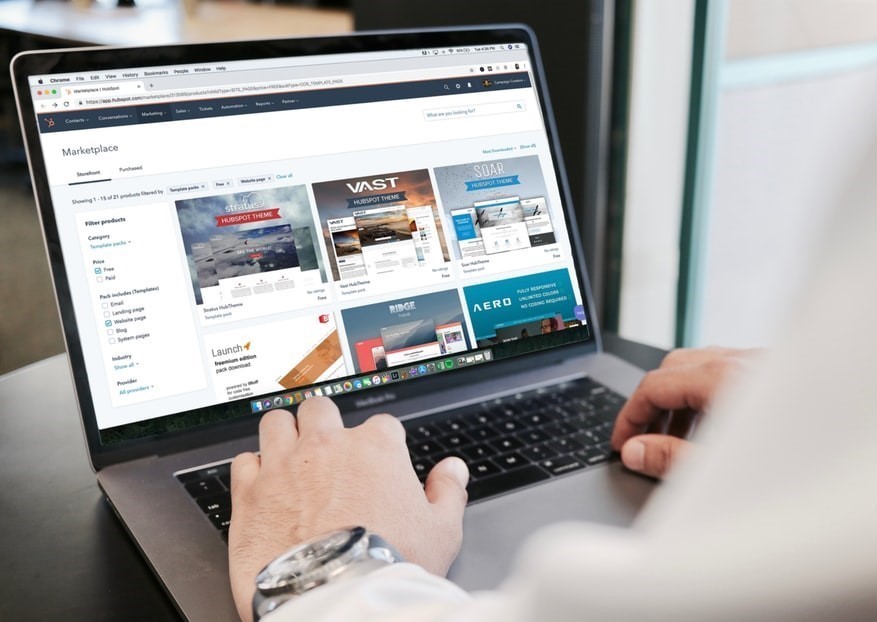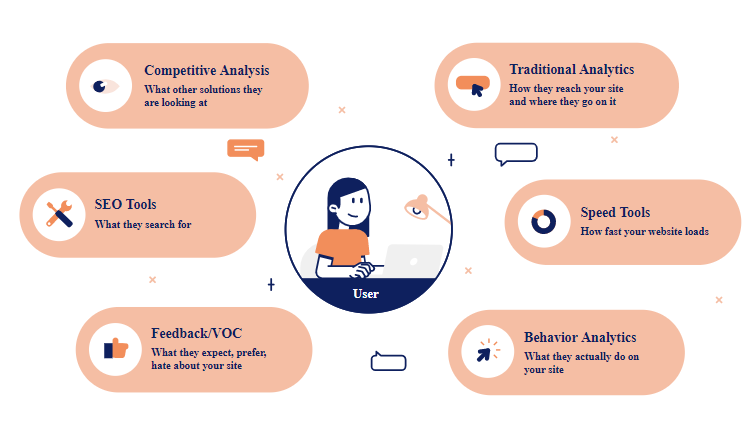Whether you own a flower shop or any other business, having a website is crucial for your company’s success. Why? Because, among millions of internet users your target audience is also searching for your services online!
But, if you’re a newbie then building a website might be an overwhelming task for you!
No worries…. Because, here we’ve listed all the key steps to building a great website for your small company, that includes getting a domain name, purchasing the best web hosting for small business in UK, etc.
Read on to find out more!

7 Key Steps to Building a Great Small Business Website
Creating a website is not that difficult if you follow the right steps! Here’re are the key steps to getting started:
- Purchase the Best Web Hosting for Small Business
- Get an Easy-To-Remember Domain Name
- Create Engaging Website User Interface
- Optimize Your Website for SEO
- Get Content Management Software (CMS)
- Create and Publish Long-Form Content Regularly
- Measure Your Website’s Performance and Analytics
1. Purchase the Best Web Hosting for Small Business
No matter what business you’re running, you need to choose a reliable web host! From here your website is made available to your visitors.
And with the best web hosting for small business in UK, you can also enjoy loads of add-ons like SSL certificate, free domain, and a lot more.
Before shaking hands with any web host, find out the answers of the following questions:
- Do they offer a variety of hosting options? (i.e., VPS hosting, dedicated hosting, etc.)
- Can they help you run your website at a blazing fast speed?
- Do they provide SQL database and cPanel?
- Is their support team available 24/7?
- What percentage of uptime do they offer? (ideal uptime is 99.9%)
- Do they have an impressive client portfolio or not?
With the answers of above questions, you can easily decide which is the best web hosting for small business in UK or wherever else you’re located. Just make sure your chosen host is enriched with all the features every web host must-have.
Ready with your business hosting, what’s next?
2. Get an Easy-To-Remember Domain Name
Your domain name, often known as your web address is the front gate to your website. Thus, it should be super easy to use and as well as good for SEO.
Here’re some tips for you to creating an ideal domain name:
- Make it precise and easy to spell: Shorter domain names are easier to remember!
- Stick with Proper Domain Name Extensions: From tons of available extensions get the one that is already popular i.e., .co.uk, .org etc.
- Incorporate keywords: Conduct keyword research and come up with one appropriate keyword of your niche and add it to your domain name.
- DO NOT USE EXISTING DOMAIN NAMES! To save yourself from copyright claims, type your chosen name on an online domain checker to see whether it has a registered trademark or not.
- Make certain variations in case your chosen domain name already exists: Try adding your location or a pronoun like “mywebsite.com” etc.
- Avoid adding numbers and hyphens: Such characters convert your domain name into a complex term which your users might forget easily.
- Try to use .com extensions: .com is the most popular extension and can easily help you appear trustworthy in front of your users.
- Try to buy your domain name from the best web hosting for small business! The best agency offers your variety of TLDs and even a free domain name! Don’t forget to check the 10 essential features of a domain registrar.
To learn how to get a free domain name click here!
3. Create an Engaging Website User Interface
Getting a domain name and choosing the best web hosting for small business were just the preliminary steps!
The next thing you need to work on is your website’s interface.
You want your visitors to stay on your website? Use captivating designs.
You want the audience to return? Make it super easy to navigate!
Website has the power to convert your passive visitors into actual customers. Thus, get a user-friendly website that can load at an incredible speed on all the browsing devices (laptops/mobile phones etc.).
Here’re some tips for you:
- Use fascinating designs but make sure they’re not too pinchy!
- Add easy to read and clear fonts
- Make sure your contact information is not hidden!
- Use clear call-to-action (CTA) buttons
- Create standard pages i.e., contact info, about us, home, product/services, privacy policy, and other relevant pages.
All done? Now, your website is ready to launch!
Just, make sure your website is enriched with all the essential features every business webpage must have!
4. Optimize Your Website for SEO
Once you’ve launched your website with help of the best web hosting for small business in UK, you need to focus on search engine’s ranking factors. For this, you need to focus on your website’s SEO optimization.
The better a website is optimized the higher it can rank on search results.
Here’re some SEO practices you need consider:
- Conduct keyword research
- Use internal and external links in blog-posts
- Create keyword-pivoted content
- Grab tons of customer reviews
- Create social media accounts to drive more traffic to your website
- Get an SSL certificate for better security and ranking
- Add social media links to blog posts
If you find it hard to manage all this, then better shake hands with the best SEO services provider to manage everything in one go!
5. Get Content Management Software (CMS)
Whatever the size of your business is, you need a CMS!
CMS is the software that helps you manage your content without having to learn the technical coding language i.e., CSS, HTML, etc.
Depending upon the needs and requirements of your business, you can choose any popular CMS i.e., WordPress, Joomla, Drupal, etc. All of these come up with loads of themes that you can choose right away!

Further, they allow you to manage your content, updates, security, and much more with just a few clicks!
6. Create and Publish Long-Form Content Regularly
New and SEO-optimized content is important for search engines. Thus, you must draft and publish high-quality content regularly.
Here’s how you can write a heavy-hitting blog-post in just 4 steps:
- Come up with the important keywords of your niche
- Start working on topics that your audience is looking for
- Be creative and try to build curiosity in your readers’ hearts
- Stay to the point and divide your content in different headings
- Add internal and external linking
And that’s it!
Don’t stuff your content with oodles of keywords and irrelevant information. You need to make sure your readers enjoy reading your content. Else, they would move back, bestowing you with an increased bounce rate! Apart from that, you also need to focus on the length of blogs. Stick with 2000 to 3000 words because only this can help you stand out easily on the internet.
After getting the best web hosting for small business in UK, set a content strategy. Like, how often to publish content? What topics you should work on? etc.
7. Measure Your Website’s Performance and Analytics
If you don’t know where you’re heading, how can you improve?
Once your website is online you would surely want to know how it’s performing. Google Analytics or Google Search Consoles helps you assess different type of information, that includes:
- Ratio of regular, monthly and yearly visitors
- Conversion and bounce rate
- Visitors’ device plus their browsers
- Most popular pages
- Geographical details
- Time spent on your website by the visitors
- Broken Links
- Specific keywords to find your site
And, with the help of above data, you can conduct different analysis to improve your performance:

Assessing your website’s progress would help you make future decisions. By this, you can easily replace any bad strategy before it’s too late!
Want to build a website for your small business? Find the best web hosting for small business in UK to get started and follow all the steps discussed above.
20 Apr 2021
 GBP (£)
GBP (£)
 USD ($)
USD ($)







